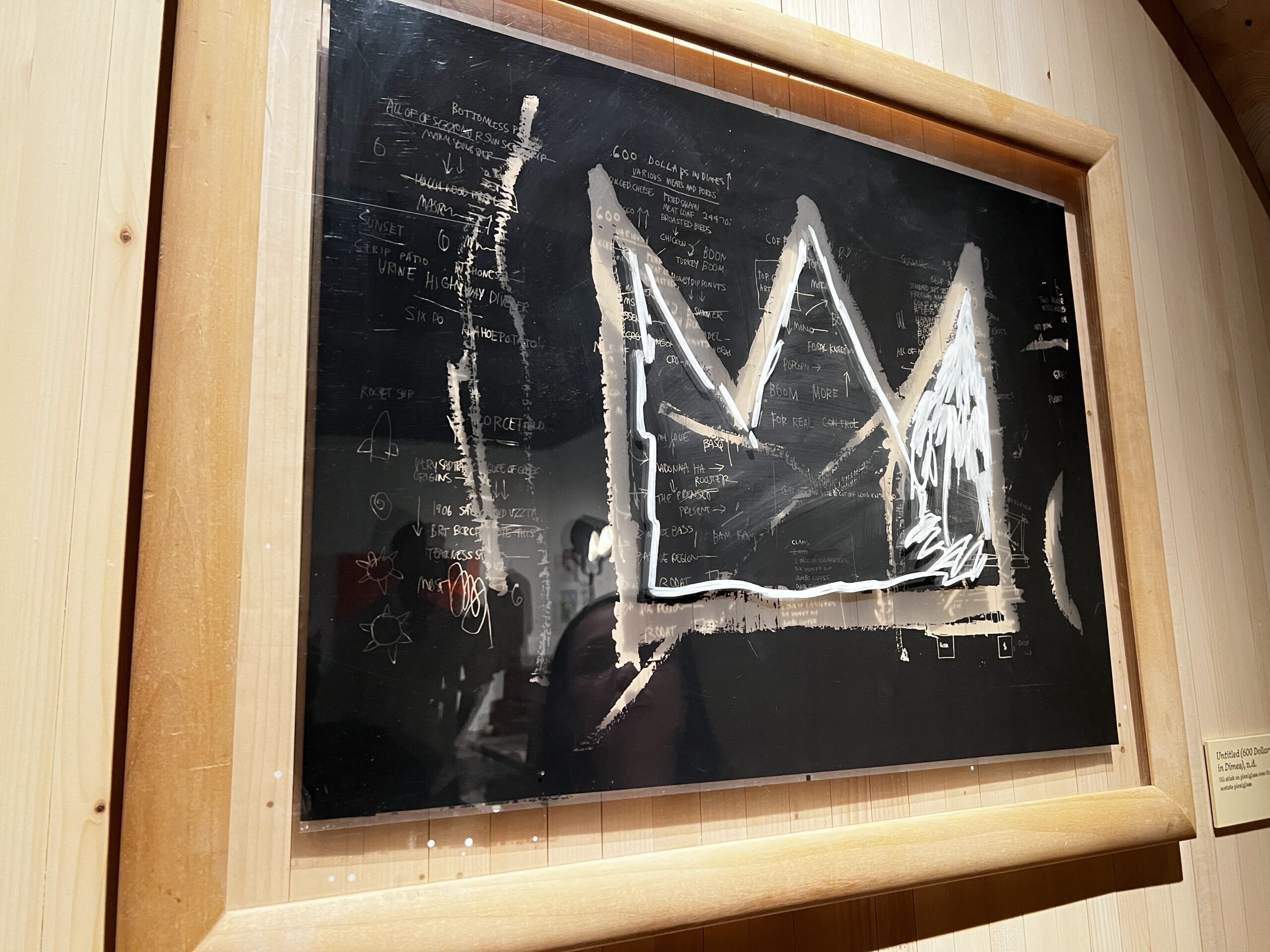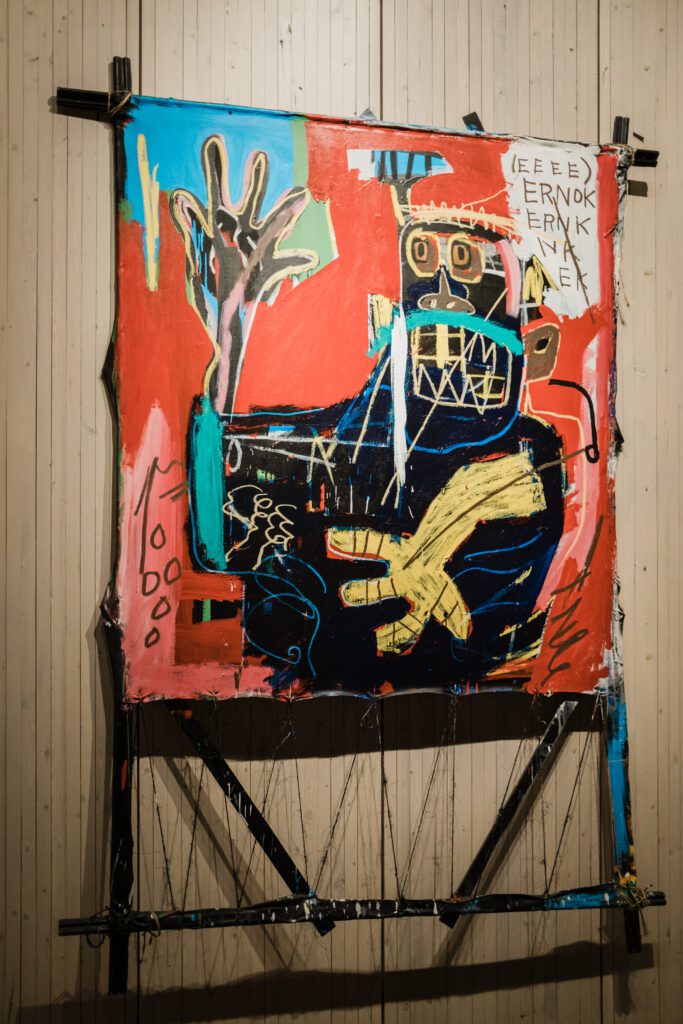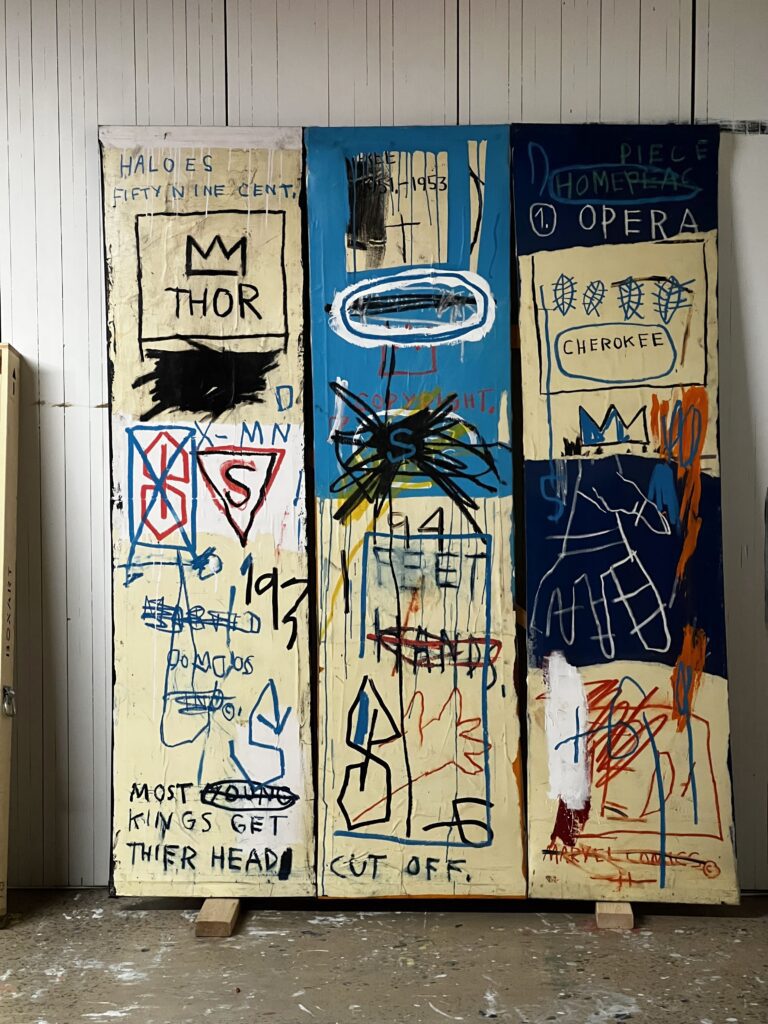
What’s the Importance of Basquiat’s Crown Motif?
Jean Michel-Basquiat was an African and Haitian American artist whose visceral paintings reflected the burgeoning style of Neo-expressionism in the 1980s. Jean-Michel Basquiat’s motifs from his paintings appear in much of his prolific oeuvre and have crossed over to become major symbols of popular culture in fashion and design today.
Like many young graffiti artists, he wanted to be seen, heard and acknowledged. Using a crown as a sort of logo in his art, he may have been telling the world to take notice and recognize the young king making his mark.
What Are Some Symbols in Basquiat’s Work?
Basquiat has always created art with subliminal symbols, from his very early days with SAMO to his imaginative monsters and Cassius Clay.
- Read More: The Masterworks Basquiat Buying Guide

SAMO©
Jean-Michel began tagging and street art through much of the Lower East Side of Manhattan under the pseudonym SAMO with his friend Al Diaz. In this period, Basquiat became heavily influenced and interested in the Avant-Garde art scene of New York.
Basquiat was very interested in the power of logos, explaining his SAMO© graffiti tag as such. The younger Basquiat and his friends had plastered New York City’s SoHo neighborhood with this acronym for “same old shit” as a commentary on the exclusivity of the art world but also perhaps to build notoriety in preparation for his entry into that world.
Skull Figures
Basquiat used skulls in a number of his works. These paintings were typically always large in size and today can be seen repeated in pop culture reference to Basquiat.
The most expensive work by Basquiat is “Untitled,” a skull-scribbled painting that he did in 1982. He used acrylic, oil stick, and spray paint to materialize his vision. The painting was priced at $4,000 when it was first up for sale. After more than three decades, in 2017, “Untitled” was auctioned and bought for $110.5 million by Japanese billionaire Yusaku Maezawa.
Three-Pointed Crown
The crown symbol has been a part of Basquiat’s art since his early graffiti days in New York. It is a great testament to the power of Basquiat’s art that he was able to make his crown motif with such a basic style and still leave such a strong impression.
This is the motif that we will be taking a deeper look at.
What Does the Basquiat Crown Symbolize?

The crown’s deeper meaning is part of Basquiat’s own mythology of himself as a “radiant child.”
Other theories revolve around the artist’s association with people he considered kings, and his ambition to be one of the great artists remembered throughout art history.
Using this particular symbol in his art was a very clever act in itself. Since his days of doing art on the streets of New York, Basquiat excelled in the marketing aspect of his work. He would paint graffiti art in prime locations that could be noticed by many people, including those with power and influence, such as Andy Warhol, who would later take the young artist under his wing and propel him into the New York Art world and beyond.
The crown tends to spark many people’s reactions and is very versatile in meaning. It can be used in a variety of different works and represent something different each time it is utilized.
Examples of Basquiat’s Crown Motif
Basquiat’s crown evokes a provocative, emotional reaction. Its appropriation by other artists and designers authenticates its position as an icon that profoundly resonates in today’s culture.
Most of Basquiat’s paintings feature the crown in some shape or form. Below are some examples of the Basquiat crown in paintings.
A Pile of Crowns by Keith Haring
The painting A Pile of Crowns, made by friend and collaborator Keith Haring, was created to memorialize the late artist who had recently passed from a heroin overdose at the young age of 27.
The painting, completed on a triangular canvas, features a pile of Basquiat’s three-pointed crowns taking over the whole composition. The painting immortalizes Basquiat by using his motif to represent his greatness, the many crowns, signifying that he is more than just a graffiti artist.
Red Kings
In Red Kings (1981), Basquiat presents two figures side by side wearing crowns. Many theories have come up regarding who these figures are meant to represent. Some scholars believe that the two figures are Basquiat himself and Pablo Picasso.
This meaning would praise Picasso as an influential artist of history but also stage Basquiat himself at an equal level of importance to Picasso.
Irony of A Negro Policeman
Basquiat was aware of the struggles and strengths of Black men and women and would incorporate these themes in some of his work.
His Neo-Expressionist piece Irony of the Negro Policeman displays his opinion of Black police officers in the form of an abnormally shaped person with an unpleasant expression on his face.
The word “pawn” can also be found near the bottom of this piece, and may reflect what Basquiat felt the role of Black police officers represented. This painting is notably devoid of the crown and instead just features a hat that appears heavy and restraining.
Basquiat’s thoughts and views were expressed very transparently compared to his more abstract paintings.
Where in most cases, the African American artist would crown his fellow Black man, in this case he portrays the betrayal of a Black man — taking a position that has historically abused and harmed Black people.

Final Thoughts on the Basquiat Crown Motif
Basquiat challenged the status quo of art history by creating images that honor Black men as kings and saints. With his signature recurring motif – the crown – the artist recognizes the majesty of his heroes: groundbreaking athletes, musicians, and writers.
Inspired by their accomplishments, Basquiat believed he was continuing the work of this noble lineage: he often depicts himself wearing the same crown in his self-portraits. Basquiat’s crown is a changeable symbol. It is sometimes a halo and sometimes a crown of thorns, as the artist emphasizes the martyrdom often involved with sainthood. For Basquiat, these heroes and saints are warriors – sometimes rendered triumphant, their arms raised in victory. For us, they are the muses and inspiration for one of the most groundbreaking and revolutionary contemporary artists.
Want to Become a Part of Art History?
Paintings by legends like Picasso and Basquiat have increasingly limited supply and fervent demand, especially during inflationary periods.
Representations like this don’t just teach us about history, they can help us improve our own futures.
Because the right art can hold, and grow, its value through even the most turbulent economic conditions. It’s why art collecting didn’t end with kings and emperors, it continues with modern-day CEOs.
For example; 13 trillion dollars of hard-earned money was wiped from the stock market this year, but while that was happening, auction houses had their highest ever first half sales.
You can become a part of art history while growing your own wealth by investing in your favorite, original blue-chip art with Masterworks.
Read our beginner’s guide to investing in art or get started investing today.